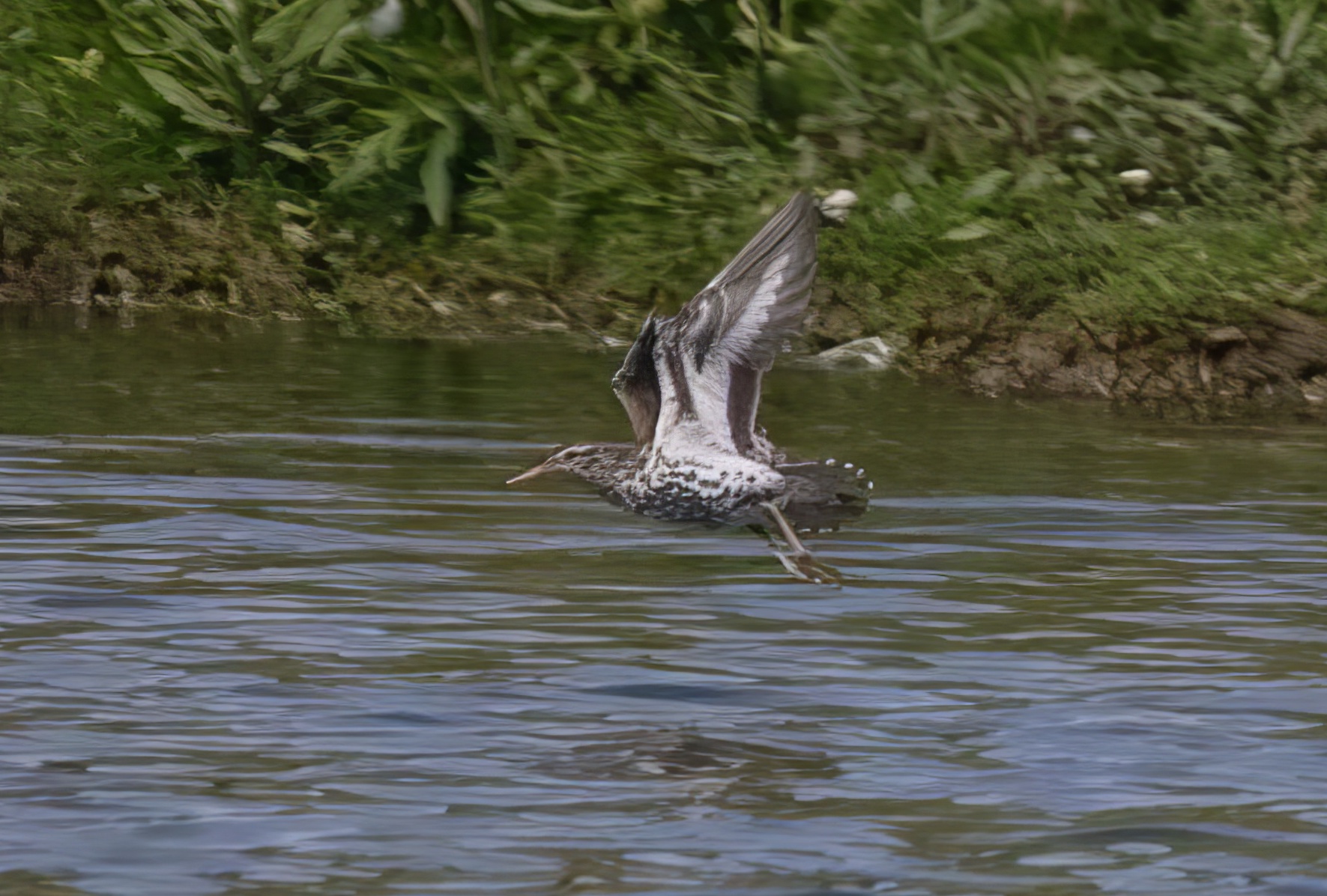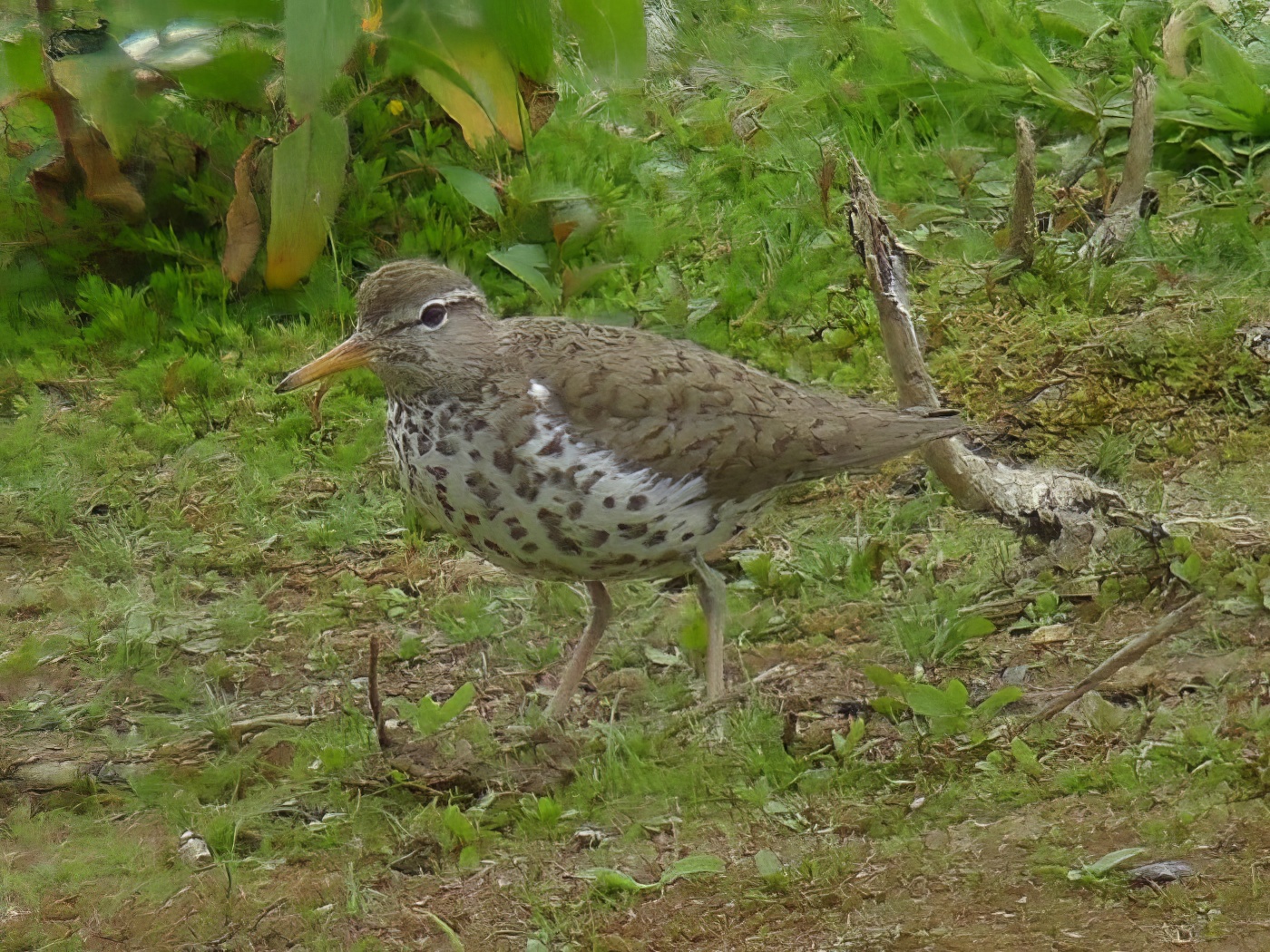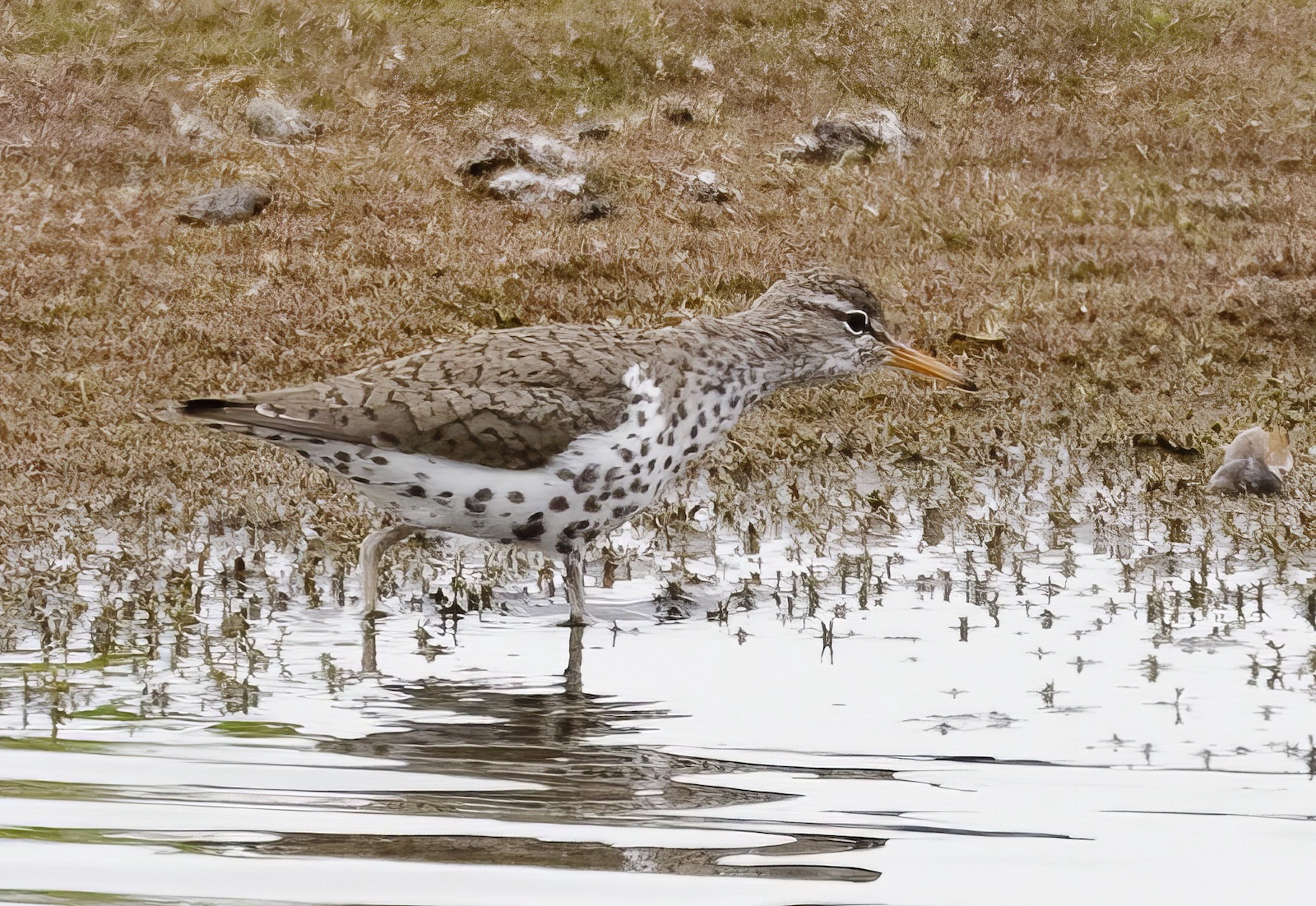Spotted Sandpiper Tringa macularia



First recorded at Wisbech STW in November 1970; the second was also seen there seen there on several dates June-August 1971, presumed to involve the same individual. The third, an adult in summer plumage was found on The Wash in 1999, present on and off for two weeks. The fourth and fifth records were also birds in summer plumage, both one day birds. There have been very occasional reports of pairing between Spotted and Common Sandpiper in Britain and one report of a breeding pair of Spotted Sandpipers in the Highland Region in 1975. Another mixed pair produced three full-grown young in July 1991 in Yorkshire and may have been the same pair seen in that county in earlier years.
There have been more than 200 British records since 1950 (only one before then) and there are around five per year and show an increasing trend.
| Site | First date | Last date | Count | Notes |
| Wisbech STW | 09/11/1970 | 12/12/1970 | 1 | Winter plumage, age unknown. |
| Wisbech STW | 13/06/1971 | - | 1 | Adult in summer plumage. |
| Wisbech STW | 29/07/1971 | - | 1 | Presumed same bird, in summer plumage |
| Wisbech STW | 30/08/1971 | - | 1 | Presumed same bird, in summer plumage |
| Holbeach marsh | 15/08/1999 | 28/08/1999 | 1 | Adult in summer plumage |
| Whisby NP | 17/06/2011 | - | 1 | Adult in summer plumage |
Finder’s report: Spotted Sandpiper at Wisbech STW, November 9th, 1970, first county record.
by J. A. W. Moyes
Note: this account is based on the original correspondence and submission to RC. There were two records in 1970 and four in 1971, including the Lincolnshire bird, which was presumed to be the same individual in both years. The 1971 spring record was one of two that year, the other one being in Kent, RC noting that this was an unusual event at that time. From 1950-1971, the British total stood at 17 records. A paper by Wallace on the separation of immature Spotted and Common Sandpipers, T. hypoleucos, in autumn was published in British Birds in 1970 (British Birds 63: 168-173).
Circumstances
The observer wrote “that further to my description of a bird of this species in winter plumage at Wisbech during Nov-Dec 1970 I now submit a description of a bird of the same species (presumably the same bird) which occurred at Wisbech STW in June 1971”.
Description
Crown, nape, hind neck, back, scapulars, and wings were greyish-brown. Wing coverts and part of scapulars with odd dark spots and markings. Wings feathers dark brown, tail looked all brown and was finely barred. In flight the wing bar looked buffish as opposed to white in Common Sandpiper. There was a noticeable superciliary stripe and a pale eye ring. Bill was orange-yellow with a dark tip. Tarsus ochre. Whole of undersides of body, namely breast, flanks, and belly were boldly spotted blackish-brown. No call note was heard.
This bird stayed an unusual length of time, being first seen November 9th, and noted there until December 19th, 1970. It was seen again (presumed same) June 13th, July 29th, and August 30th, 1971, by which time it had assumed summer plumage.
(Account as per new Birds of Lincolnshire (2021), included September 2022)

